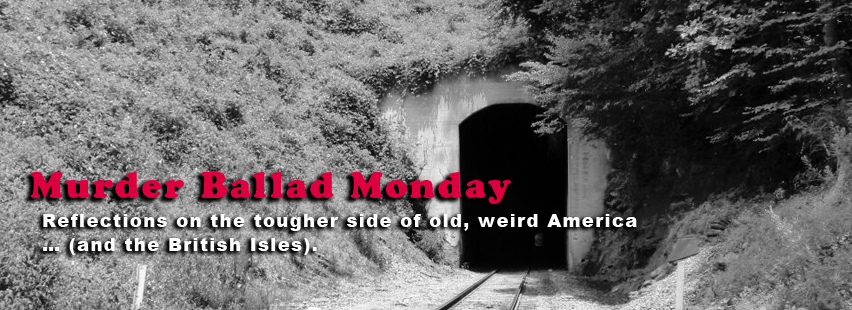Dom Flemons: MBMonday Interview, Part One
<<<Back to page 3
Ah, I was curious if it was a fretless banjo; but no.
That’s just my four-string over my lap. I was thinking about that song, and “Poor Boy” by Bukka White as well. Jimmy Tarleton from Darby & Tarleton, too. I was trying to take those people and ideas, and incorporate those together with those numbers.
“Tom Dula” has a strong North Carolina connection. You have two different versions of the “Bad Man Ballad.” In the Appalachian and white traditions, the murder ballads tend to be more of a warning. It’s like reality TV, in a way. The people in the Appalachian murder ballads, it’s so extreme that it’s just made to be way over the top, so that you as a listener can know, “Oh, I’m not supposed to do that.” But, you can see how it plays out with this guy.
“Tom Dula” happens to be based on a real event. When you read the actual story, the ballad is a lot more sensationalized. There’s another one called “Poor Ellen Smith” that’s the same sort of way, where through the kind of epic ballad traditions that people in rural communities were keeping on at that time, you would have extra emotions. You’d have a guy like Tom Dula or Otto Wood. He throws dust in the policeman’s face. The policeman goes blind, and he thinks back about his wife and child at home, and how his blindness will affect them.
You have a lot of embellishment that goes on in those ballads, especially in the Appalachian ballads with women in them. Those are warning tales. I’ve seen a lot of stuff written where people are talking about murder ballads where women get murdered as being.super-misogynistic ballads. But those are warning tales. Those are warning stories to tell young girls to try to be morally good.
It’s one of those things, just like with race. If you tried to contextualize this stuff in modern, post-feminist ideology, you’re not going to get anywhere. Women were supposed to stay at home, take care of the kids, do the cooking, and not speak out. That’s just the culture of those ballads. It is a very harsh reality, but if you try to look at it with modern day ideals of how women are supposed to be, and how free they can be in society, you’re just not going to get there.
I’ve written about “Tom Dula” and “Poor Ellen Smith,” and also “Banks of the Ohio.” One of the things I was interested in with “Banks of the Ohio” came out of listening to “Backstory” on NPR. They did a history of courtship and the way courtship played out in the 19th century versus the 20th century. In the 19th century, courtship generally took place by way of men paying calls on women at their house, rather than asking them out on dates. One of those things that that was telling me, particularly at the start of a song like “Banks of the Ohio,” was that something had already gone wrong if this young man and woman were meeting at a secluded location. People in that era heard that story very differently than we hear it today.
Absolutely. Even a song like Henry Thomas’s “Bulldoze Blues” has a line, “Go shake a hand and tell your father goodbye.” With those same sort of courtship patterns, the man is supposed to go to the house, shake the father’s hand, and take his bride from the house. For the man to say to the woman, “Hey, go and shake your father’s hand for me and say goodbye” is totally against protocol.
These songs are warning ballads. A lot of times you find out when you get to the root of it that at some point the woman went out, met with the young man, got pregnant, and then the man does not know how to deal with it, and kills her. That’s usually what the crux of a lot of those ballads is. It’s a warning to say, “Hey, you young women, you stay away from the men.” This was the time of Sadie Hawkins Day dances and stuff like that where women were taught to be afraid of sex and afraid of men, because of all the bad stuff that can happen with that socially. Again, this strong embellishment, saying “Hey, he’ll go out and murder you.”
We’ll continue our interview with Dom Flemons in next week’s post, and learn what murder ballads were formative for him and which ones may be on the horizon for an upcoming project.


